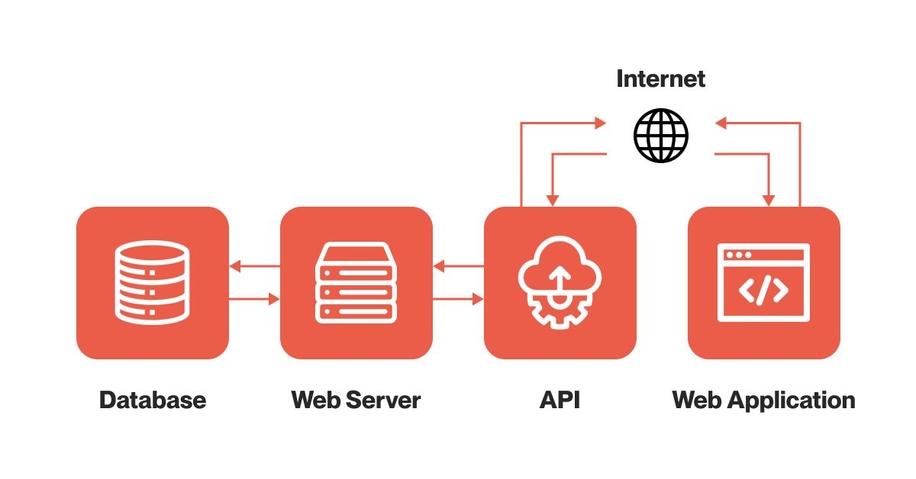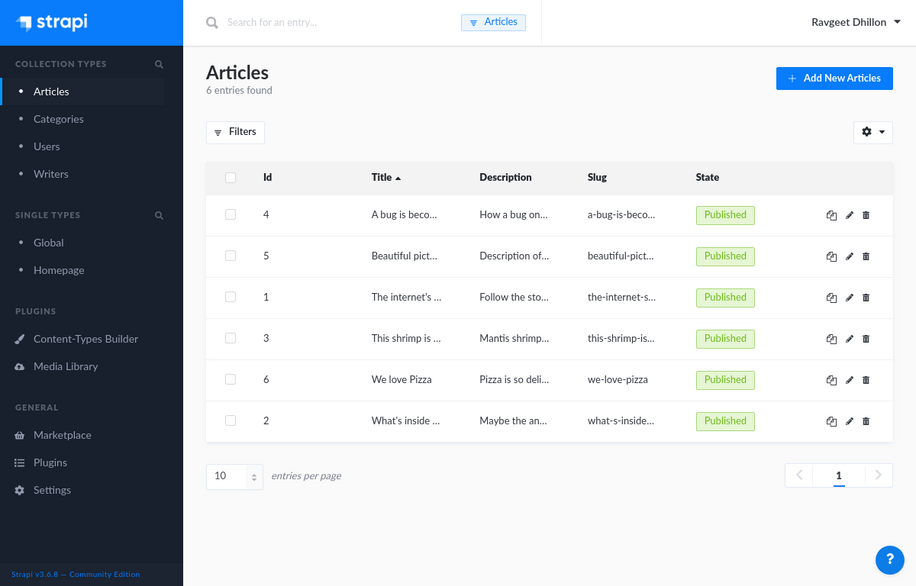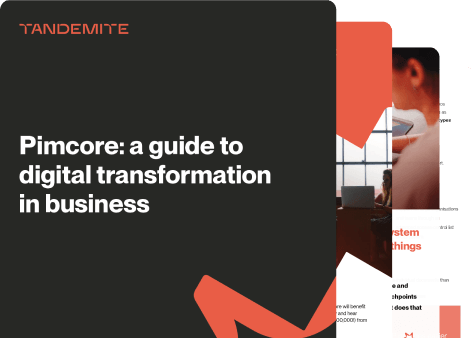Headless CMS - has it slipped your mind? If you look for inspiration on YouTube sometimes, you may come across, for example, the video "X content management tools you should be using in 2022 instead of WordPress." They are talking specifically about Headless CMS, such as Contentful, Sanity, or Strapi. What exactly are they? How do they work? What and how would you use Strapi for? What is Strapi at all? And actually, why would it replace WordPress for you?
What will you find in this article?
- you will know what Strapi and headless CMS are,
- you will see what are the most interesting functions of Strapi,
- you will learn examples of the use of this CMS,
- you will find out why you should opt for Strapi headless CMS.
Headless CMS… what does it mean?
Headless CMS is such a content management system in which the backend (databases) and frontend (graphical presentation of data) function separately. Here, data is transferred to various devices or publishing channels via APIs. That’s why it’s called headless. If the backend is the body and the frontend is the head… in the case of Headless CMS, developers can focus only on the body. In our case, Strapi. This is because separate software provides the head.
[API is Application Programming Interface, in simple terms, the interface for applications to communicate. If any two tools have an API, they can be communicated with each other (e.g. an online store with the payment system przelewy24.p, and then with the bank of your choice). An API helps securely transfer data between different systems].

This means that structured information such as text, video, images, or other multimedia can be displayed on any device. From a classic blog on a website to data in a smartphone app to a smart fridge interface. In an aesthetically pleasing way without the need for separate content formatting for each device.
We wrote about this type of CMS more widely in this article „Headless CMS vs traditional CMS” and „Headless in e-commerce. What do you need to know?”.
What is Strapi Headless CMS?

Strapi is an open-source headless CMS that makes it easy to create applications and manage the content of all kinds. With JavaScript, you can build your own APIs quickly and even without knowing the backend. The tool can be set up quickly, and you can create the first types of content in it right away. Shortly after that, create your API and start submitting content to the channel of your choice.
Strapi is an open-source software (meaning free) with a well-developed community. Therefore, by using it, you also learn from the experience of other users.
Strapi provides a great deal of customization (e.g. admin panel), so you can customize it for any project. It also offers many plug-ins (plug-ins). You can find them in a special place called Strapi Market.
Some of the interesting ones are:
- Awesome SEO helps you analyze your site's SEO. The plugin not only suggests how to gain the best results but also detects critical errors;
- Measurement Protocol, thanks to which we will draw even more than usual from Google Analytics. E.g., we will learn in detail about the behavior of our visitors. Analyzing the data will help you grow your business;
- Internationalization, supporting the localization of a site or application to other markets. Adapting content for consumers in other countries has never been easier.
And that's not all! Most importantly, it allows developers to use whatever tools or technologies they specialize in. The number of possibilities and great flexibility make us boldly call the approach taken by this Headless CMS developer first.
Example of content management with Strapi
Strapi is a headless CMS where you can create a flexible data structure in as little as 2 minutes. You will define models and relationships between content yourself, which will then allow you to display even advanced layouts.
Having already a text structure, you can also create, edit and manage it in Strapi. Then you will build applications or services using any framework of your choice (e.g. Node.js, React, Netlify, etc.). Further, using either REST API or GraphQL, you will send a request for your content to Strapi, which you will then forward to either traditional servers or cloud platforms (such as AWS or Azure).
Let's use a simplified example. When you create a website using Strapi, you will connect any database to it (such as PostgreSQL, SQLite, MySQL or MariaDB) and then configure content types. The API will create itself after you fill the content in, based on the elements you add in Strapi. Later you will pass the content to any tool that will display it.
Notably, although as we mentioned Strapi is developer-first, it does not forget about other user groups of content management systems, such as content editors, product managers, or leaders.
Let's see what features the developers have provided for each of these groups.
Whom and how Strapi supports?
- Developers: Strapi boosts work significantly and allows freedom of choice when it comes to framework or technology. In addition, it provides support from a community of more than 135,000 users.
- Content Managers: it frees you from having to ask developers for changes to your app or website every time. All we need to do is plan in advance the content elements we may need. Reduces the time it takes to create new subpages (content managers can do it themselves once Strapi is set up). On top of that, it helps to free ourselves from the template limitations of traditional What You See Is What You Get CMS (like WordPress).
- Product Managers: help you easily build a flexible content structure, as well as a content workflow (you can create your own workflow in Strapi). This makes communication with product users more efficient.
- Business: the most important thing will be the acceleration of projects given by Strapi (we're talking about an acceleration of up to 3 times). Faster site creation means, of course, more time for other important business activities. This Headless CMS also helps increase data security by separating the frontend and backend layers. For the same reason, it's additionally a future-proof tool. Thanks to API, it allows you to prepare even for media that don't yet exist.
Strapi in practice: use cases
You already know what Strapi is, but nothing helps you understand the essence of things like specifics. It's time for you to see for yourself examples of how to use this content management system.
Using this Headless CMS you can:
- Build an app for listening to podcasts, tracking habits, or completed tasks. Actually: an app for anything.
- Create a survey tool.
- Program a chat room that runs in real-time.
- Automate email sending.
- Create website for your e-commerce business.
Is Strapi for you?
All this sounds great, you see a lot of advantages, but after all, you need to answer one most important question: is this a solution for your business? So let's do a little summary and think about it.
You should consider this CMS if:
- You care about time. First and foremost, Strapi CMS significantly reduces the time it takes to launch a project (known as time-to-deploy). Why? Because the backend is no longer a problem. You don't have to create it yourself. You choose all the components for content creation from the panel. It allows you to deliver content to any medium thanks to the API. This makes your content ready for publication even on devices that don't yet exist.
- You want to expand your existing sales system. If your current solutions don't allow you to manage your content efficiently, you can integrate Strapi into your existing technology.
- You are betting on intensive development. Do you need a system that allows you to scale quickly? Are you moving forward strongly? Strapi is the perfect solution for you, because it's a technology that grows with your business.
- You operate in foreign markets. If you have a presence in multiple markets, the functionality of this system is something for you. Strapi allows you to efficiently manage a large amount of content in different languages.
If you feel that Strapi can help you grow your business... then you're probably right! The question then arises, what's next? Rest assured. We are here to help you. Contact us and we'll answer all your questions and plan the next steps together. If you decide along the way that it's not for you, after all, nothing will happen. This is just one of the possibilities!








